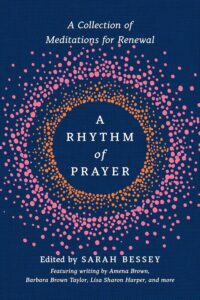In our fast-paced modern world, more people than ever are seeking ways to find peace, clarity, and connection. Two ancient practices—prayer and meditation—have stood the test of time, offering distinct yet complementary paths to inner tranquility. But what exactly sets these practices apart, and how can you determine which one might best serve your spiritual and emotional needs?

Understanding Prayer: A Divine Dialogue
Prayer, at its essence, is a heartfelt conversation with the divine. It’s like having a direct line to a power greater than ourselves—whether you call it God, the Universe, or Higher Consciousness. When we pray, we open ourselves to a relationship that transcends our everyday experiences.
Think of prayer as writing a letter to your wisest, most loving friend. You might express gratitude for life’s blessings, seek guidance during challenging times, or simply share your deepest hopes and fears. This practice creates a bridge between the earthly and the divine, offering comfort through the belief that we’re not alone in our journey.
Prayer often provides:
- A sense of being heard and understood
- Comfort during difficult times
- Guidance for important decisions
- A way to express gratitude and appreciation
- Connection to religious or spiritual traditions
Meditation: The Journey Inward
Meditation, by contrast, is like turning on a flashlight to illuminate the landscape of your own mind. Rather than reaching outward, meditation invites us to journey inward, observing our thoughts, feelings, and bodily sensations with curious attention.
While meditation can be spiritual, it doesn’t require any particular religious beliefs. Many people practice meditation purely for its psychological and physiological benefits, which have been extensively studied by scientists. Through regular practice, meditation helps us develop a more balanced relationship with our own consciousness.
The benefits of meditation include:
- Reduced stress and anxiety
- Improved focus and concentration
- Greater emotional regulation
- Enhanced self-awareness
- Better sleep quality
Different Paths, Similar Destinations
While prayer and meditation might seem like distinct practices, they often lead to similar destinations. Both can bring about a sense of peace, clarity, and connection. The main difference lies in their approach: prayer reaches outward while meditation turns inward.
Some people find that combining both practices creates a more complete spiritual toolkit. You might start your day with meditation to center yourself, then use prayer throughout the day to maintain a sense of divine connection. Others prefer to focus exclusively on one practice that resonates more deeply with their beliefs and personality.
Choosing Your Path
How do you decide which practice is right for you? Consider these questions:
- What are you seeking? If you’re looking for a personal relationship with a higher power, prayer might be your natural choice. If you’re more interested in understanding your own mind and developing mental clarity, meditation might be the better fit.
- What’s your worldview? Your religious or spiritual beliefs might naturally guide you toward one practice or the other. However, remember that both prayer and meditation can be adapted to fit various belief systems.
- What feels natural? Sometimes, the best practice is simply the one that feels right to you. Try both and notice which one brings you a greater sense of peace and connection.
Getting Started
Whichever path you choose, remember that both prayer and meditation are skills that develop with practice. Start small—perhaps with just five minutes a day—and gradually increase the duration as you become more comfortable with the practice.
For prayer, you might:
- Set aside specific times each day
- Keep a prayer journal
- Join a prayer group
- Use written prayers that resonate with you
For meditation, you could:
- Try guided meditations through apps
- Start with simple breathing exercises
- Join a local meditation class
- Practice mindfulness during daily activities
The Bottom Line
There’s no universal “right” choice between prayer and meditation. The best practice is the one that helps you feel more connected, peaceful, and authentic in your spiritual journey. Many people find value in both practices, using them as complementary tools for spiritual and personal growth.
Remember that your spiritual practice is deeply personal. Feel free to experiment, adapt, and combine these approaches in ways that work for you. The goal isn’t to follow someone else’s path perfectly, but to find the practices that genuinely support your own journey toward inner peace and spiritual fulfillment.
Hey there! We hope you love our fitness programs and the products we recommend. Just so you know, Symku Blog is reader-supported. When you buy through links on our site, we may earn an affiliate commission at no extra cost to you. It helps us keep the lights on. Thanks.
Disclaimer: The information provided in this discussion is for general informational and educational purposes only. It is not intended as medical or professional advice. Only a qualified health professional can determine what practices are suitable for your individual needs and abilities.

